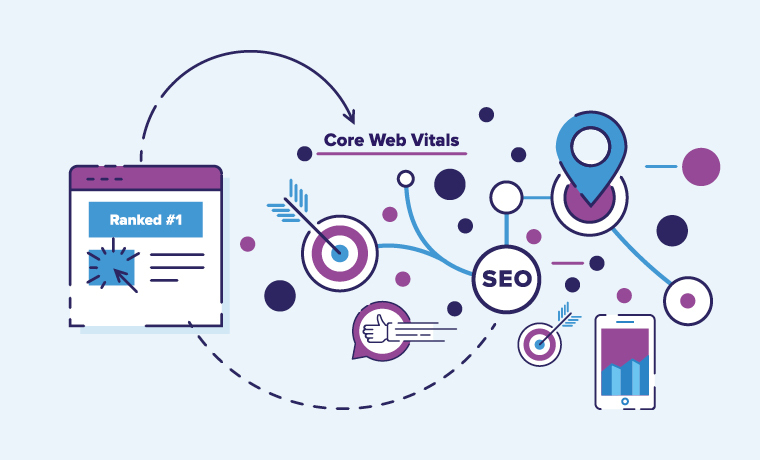Core Web Vitals: How Do They Affect Your Website?

Have you ever had a terrible experience with a website because of a slow load time?
Google considers core web vitals & existing user experience signals an important ranking factor for a website. That’s exactly what google believes is a major ranking factor which is a smooth user experience. This ranking factor was introduced in May 2020 and is christened “page experience signal”. Google has combined core web vitals & existing page experience metrics, giving you the page experience signal. Core Web Vitals are a set of metrics related to speed, responsiveness, and visual stability.

Lets’ take a look at what Core Web Vitals are
- Largest Contentful Paint (LCP)
This measures how long it takes for the largest piece of content to appear on the website screen. LCP could be an image, block of content or both. To provide a good user experience, LCP should occur within 2 – 2.5 seconds of when the page first starts loading or a maximum of 3 seconds to avoid a “poor” score.

- First Input Delay (FID)
FID measures how long it takes for the website to start being interactive with the user. It could be a tap on a CTA button, choosing an option from the menu bar, clicking on a link connecting you to the site’s navigation or entering your email into the subscribe box. FID technically measures how long it takes for something to happen on a website page. Since it is focused on interactivity for a good user experience, pages should have a FID of less than 100 milliseconds.

- Cumulative Layout Shift (CL)
CL is the newest addition to core web vitals focusing primarily on the layout experience of the website page. Especially when a user is ready to interact with a CTA button and there is a sudden layout shift, this can directly affect the user experience. CLS focuses on the website’s visual stability and layout. To provide a good user experience, web pages should maintain a CLS of less than 0.1

Earlier page experience metrics
- Mobile-friendliness: Google uses “mobile-friendliness” as an important ranking factor for mobile search.
- Safe-browsing: Google’s safe browsing helps protect more than four billion devices each day by showing warnings to users when they attempt to navigate to dangerous websites.
- HTTPS: Google sees “ HTTPS” ranking as an important security measure. It has encouraged websites to switch from an SSL enabled website to HTTPS to maintain a more secure web environment.
- Intrusive interstitial guidelines: Google has a strict mandate against interstitials that ruin the user experience. Any website found guilty of showing intrusive popups and banners will see its content be demoted and penalized by Google

Maintaining your website health is very crucial to be termed a quality content website and to see an improvement in your search result ranking (SERPs). Core Web Vitals play a significant role in providing a good user experience and creating an opportunity to convert the user into a potential client.
Have you checked your website health lately? Connect with Tekhné.
Written By Anisha Chaudhari






